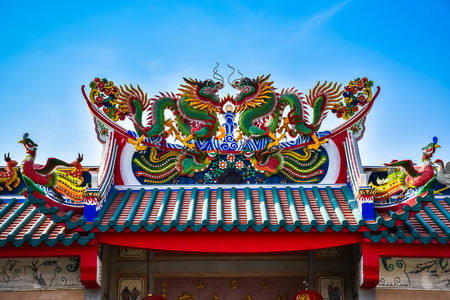Overview of Traditional British Entryways
Traditional British entryways are renowned for their distinctive charm and historical depth, each reflecting the architectural evolution of the United Kingdom. Across towns and cities, one encounters a rich tapestry of entryway designs rooted in various historical periods, notably Victorian, Georgian, and Tudor eras. The iconic Victorian entryway often features ornate detailing, stained glass panels, and solid wooden doors with polished brass fixtures—elements that evoke a sense of grandeur while maintaining privacy and security. Georgian entrances, on the other hand, are characterised by their symmetrical layouts, fanlights above the door, and understated elegance achieved through restrained decorative motifs. In contrast, Tudor-style entryways stand out with their arched door frames, heavy timber doors, and intricate ironwork that reflect the craftsmanship of medieval England. These architectural features are not only aesthetically pleasing but also narrate stories of social values, technological advancements, and influences from both local tradition and continental Europe. Understanding these defining elements is essential when considering how such traditional British entryways may interact with or adapt to principles from other cultures—such as Feng Shui—while preserving their unique heritage.
2. Core Principles of Feng Shui Relating to Entryways
Understanding how Feng Shui principles interact with traditional British entryways requires a close look at the essential concepts that govern entrance design in Chinese geomancy. In Feng Shui, the entrance, often referred to as the “mouth of Qi,” is regarded as the main portal through which energy (Qi) enters and circulates within a home. The configuration, orientation, and symbolic elements of this space are believed to influence the well-being, prosperity, and harmony of its inhabitants.
Energy Flow (Qi) at Entryways
Qi, or life force energy, should ideally flow smoothly into the home without obstruction. In traditional British architecture, features such as porches, vestibules, and solid wooden doors can impact how Qi is perceived to enter. A cluttered or narrow hallway may impede energy movement, whereas an open and welcoming space supports positive Qi accumulation. Maintaining an unobstructed pathway from the front door into the main interior rooms aligns with core Feng Shui recommendations.
Positioning and Orientation
The placement of an entryway in relation to the overall property is another vital aspect. While many classic British homes feature centrally located doors or offset entrances due to terraced layouts, Feng Shui evaluates not just position but also what faces or opposes the door — such as staircases, windows, or mirrors — which may either support or dissipate beneficial Qi. Below is a comparison table illustrating key differences and compatibilities between traditional British entryway positioning and Feng Shui ideals:
| Aspect | Traditional British Entryways | Feng Shui Considerations |
|---|---|---|
| Door Placement | Often central or offset (especially in terraces) | Preferably central; should not align directly with back door or stairs |
| Porch/Vestibule | Common for shelter and privacy | Supports gradual Qi transition if uncluttered; avoid blockage |
| Main Hallway Width | Narrow in older properties | Should allow easy flow; avoid cramped spaces |
| Direction Facing | Varies based on street layout | Certain directions favoured for different life aspects (e.g., south for fame) |
Symbolism and Entryway Features
The symbolism attached to entryway elements plays a pivotal role in both traditions. In Britain, stained glass panels, brass knockers, and decorative tiles express individuality and status. From a Feng Shui perspective, these features can be harnessed to attract auspicious energy if their colours and motifs resonate with positive symbols (such as birds or floral patterns). The door colour itself is significant: while British custom often favours deep reds, greens, or blues for visual appeal and tradition, Feng Shui interprets these colours according to their elemental associations and their effect on household fortune.
Summary Table: Symbolic Features Comparison
| Feature | British Tradition | Feng Shui Symbolism |
|---|---|---|
| Front Door Colour | Red (welcoming), Green (nature), Blue (calm) | Red (luck), Green (growth), Blue (peace); chosen per compass direction/element |
| Decorative Glass Panels | Aesthetic value; privacy enhancement | Positive motifs enhance good Qi; avoid harsh symbols like sharp points or aggressive animals |
| Name Plaques/Numbers | Status identifier; ease of finding address | Auspicious numbers preferred; clear display attracts opportunity Qi |
| Brass Knockers/Bells | Status symbol; practicality for visitors’ arrival announcement | Bells can disperse stagnant Qi; metallic elements linked with helpful people luck in certain sectors |
Conclusion: Harmonising Traditions Through Core Concepts
The intersection of core Feng Shui entryway principles with traditional British design reveals both challenges and opportunities for compatibility. By understanding energy flow, ideal positioning, and symbolic resonance, homeowners can thoughtfully adapt British architectural features to foster harmonious environments aligned with both cultural heritage and holistic well-being.

3. Comparing British and Feng Shui Approaches to Entryway Design
When examining the design of entryways, traditional British sensibilities and Feng Shui principles present both contrasts and occasional overlaps.
British Priorities: Functionality and Heritage
In the UK, entryway design has historically emphasised functionality, privacy, and a nod to architectural heritage. The classic British front door is often solid, painted in deep or muted colours, and may feature a brass knocker or letterbox—a subtle symbol of status and taste. Privacy is paramount; frosted glass panels or small windows allow light while shielding interiors from view. Layouts tend towards symmetry, with pathways leading directly to the door, sometimes flanked by low brick walls or hedges. These choices reflect a cultural preference for understated elegance, security, and continuity with the past.
Feng Shui Principles: Energy Flow and Harmony
In contrast, Feng Shui—the ancient Chinese practice—prioritises the flow of qi (energy) into the home. According to these principles, an entryway should be inviting and unobstructed. Bright lighting, vibrant colours, and healthy plants are commonly used to attract positive energy. The main door should open fully without hindrance, facing a clear path that encourages smooth energy movement. Sharp angles pointing at the door or clutter near the entrance are discouraged as they disrupt harmony.
Key Points of Divergence
The most notable difference lies in attitude towards visibility and openness. While British design values discretion and boundary, Feng Shui favours openness and welcoming features. Another divergence appears in colour use: muted tones versus auspicious reds or greens. Placement of objects also differs; where a British entry might display minimal ornamentation, Feng Shui would encourage items that symbolise luck or protection.
Potential Areas of Compatibility
Despite these differences, there are areas where British tradition can align with Feng Shui. Both approaches appreciate a clean, well-maintained entrance as a sign of respect for the home. Symmetry in British paths can echo Feng Shui’s emphasis on balanced energy flow. Thoughtful use of lighting is also valued in both traditions—whether for safety or for enhancing positive energy. By understanding these comparative priorities, homeowners can find creative ways to blend cultural heritage with harmonious living.
4. Compatibility Challenges and Synergies
When examining the intersection between traditional British entryway designs and Feng Shui principles, it becomes evident that there are both points of synergy and areas of conflict. Understanding these can help homeowners make informed decisions about integrating Eastern philosophy with established British aesthetics.
Areas of Alignment
Certain elements in British entryways naturally align with Feng Shui ideals. For example, the use of a well-kept doormat and clear, uncluttered thresholds is consistent with the Feng Shui principle of allowing positive energy (Qi) to flow freely into the home. Similarly, traditional British practices such as maintaining a symmetrical façade or using natural materials like stone and wood resonate with Feng Shui’s emphasis on balance and harmony.
Examples of Natural Compatibilities
| British Entryway Feature | Feng Shui Principle | Compatibility |
|---|---|---|
| Symmetrical door arrangements | Promotes balance and stability | High |
| Use of plants at entrance | Encourages growth and vitality | High |
| Solid wooden doors | Enhances protection and grounded energy | Moderate to High |
| Tidy pathways leading to front door | Facilitates smooth Qi flow | High |
Points of Contradiction and Practical Difficulties
Certain iconic features of British entryways may present challenges from a Feng Shui perspective. The classic use of dark colours, such as black or navy blue doors, is popular in Britain but may be seen in Feng Shui as attracting stagnant energy unless balanced with suitable accents. Additionally, stained glass panels—while aesthetically valued in the UK—can potentially diffuse energy irregularly if not thoughtfully placed. Furthermore, many British homes feature directly aligned front and back doors, which is considered unfavourable in Feng Shui as it may cause beneficial energy to rush straight through the house without circulating.
Main Contradictions Summarised
| British Tradition | Feng Shui Viewpoint | Potential Issue |
|---|---|---|
| Dark-coloured doors (e.g., black) | Might absorb too much energy; requires counterbalancing elements | Poor energy retention if unbalanced |
| Direct line from front to back door | Qi escapes quickly; loss of good fortune/energy flow | Ineffective energy circulation |
| Stained glass panels with busy patterns | Scatters Qi unevenly; disrupts calm entry flow | Pockets of chaotic energy near entrance |
| Narrow vestibules or crowded porches | Blocks Qi, restricts movement and opportunity entering the home | Diminished prosperity and welcome atmosphere |
Navigating Integration: Practical Suggestions for Homeowners
The blending of British heritage design with Feng Shui wisdom often requires thoughtful adaptation rather than wholesale change. Simple adjustments—such as pairing darker door shades with bright planters or mirrors, ensuring clear sight lines without direct alignment of doors, or choosing subtle stained glass motifs—can help harmonise the best aspects of both traditions. Recognising these compatibility challenges and synergies provides a foundation for creating entryways that are both culturally authentic and energetically supportive.
5. Practical Adaptations for British Homes
When considering the integration of Feng Shui principles into traditional British entryways, it is essential to approach the process with sensitivity to both cultural heritage and visual harmony. Rather than imposing overtly Asian aesthetics, homeowners can opt for subtle adaptations that complement existing British architecture and design sensibilities.
Subtle Adjustments to Door Placement and Flow
In British homes, the front door often opens directly into a hallway or vestibule. To align with Feng Shui’s emphasis on smooth energy flow, ensure the entrance remains clear of clutter and well-lit. If possible, avoid placing large pieces of furniture directly opposite the front door; instead, use a slim console table or an unobtrusive coat rack that maintains open movement through the space.
Choosing Appropriate Colours and Materials
While vibrant reds are popular in traditional Chinese entryways, such colours may not suit the restrained palettes favoured in Britain. Opt for muted shades inspired by classic British exteriors—such as navy, forest green, or soft greys—which still symbolise stability and welcome in Feng Shui without appearing out of place. Incorporating natural materials like wood or stone echoes both Feng Shui principles and British architectural tradition.
Balancing Symbolism with Subtlety
British entryways often feature letterboxes, knockers, and lanterns. Select designs that carry positive symbolism but remain true to local style—for example, a brass knocker shaped like a lion (representing strength) or a horseshoe above the door for luck. A potted plant or pair of symmetrical topiaries at the entrance can invite auspicious energy while enhancing curb appeal in a quintessentially British way.
Maintaining Privacy and Security
Privacy is a valued aspect of British homes. Use frosted glass panes or sheer curtains on sidelights to allow natural light without compromising seclusion. Placing a rug just inside the doorway not only grounds incoming energy but also serves the practical function of protecting floors from mud—a nod to British weather realities.
Cohesion with Period Features
If your home features original Victorian or Georgian elements, respect these details when introducing Feng Shui enhancements. For instance, preserve stained-glass panels or original tiles while ensuring they are clean and intact, as cleanliness is key in both traditions for promoting positive chi.
By thoughtfully adapting Feng Shui concepts within the framework of traditional British design, homeowners can create welcoming entryways that foster wellbeing without sacrificing authenticity or aesthetic coherence.
6. Cultural Considerations and Local Context
When examining the compatibility between traditional British entryways and Feng Shui principles, it is essential to consider the broader cultural context in which these practices are applied. The United Kingdom has a rich architectural history, with unique customs and preferences that differ markedly from those in East Asia. While some Feng Shui recommendations may align with British sensibilities—such as maintaining a clean, welcoming entrance—others might conflict with local traditions or practical realities, like the prevalence of certain door placements due to historical building regulations.
Adapting Feng Shui advice for UK residents requires an appreciation of both the physical environment and cultural norms. For example, whereas Feng Shui often encourages the use of bright colours or specific plant arrangements, British tastes may lean towards subtler palettes and more restrained landscaping. Furthermore, older British homes frequently feature entryways designed to maximise privacy and security, which can contrast with the open, inviting layouts favoured in classical Feng Shui.
It is also important to recognise that many UK homeowners value heritage features such as stained glass panels, original tiling, or period-specific doors. These elements contribute to a property’s character but may not always fit neatly within traditional Feng Shui frameworks. Rather than prescribing rigid changes, it is more constructive to interpret Feng Shui principles flexibly—identifying ways to enhance positive energy flow without compromising cultural authenticity or personal taste.
Ultimately, the key lies in balancing respect for local traditions with thoughtful adaptations of Feng Shui guidance. By understanding and honouring the distinct context of British homes, residents can make informed decisions that foster harmony and wellbeing while celebrating their home’s unique identity. This culturally sensitive approach ensures that any modifications feel both meaningful and sustainable within the UK setting.


